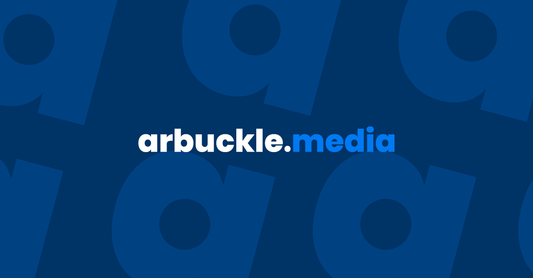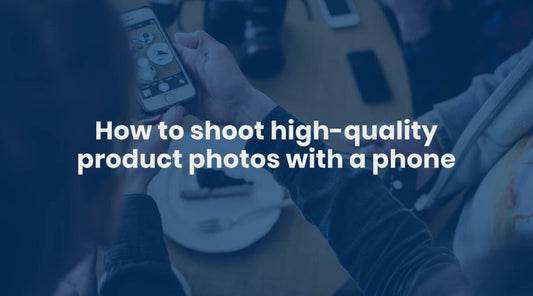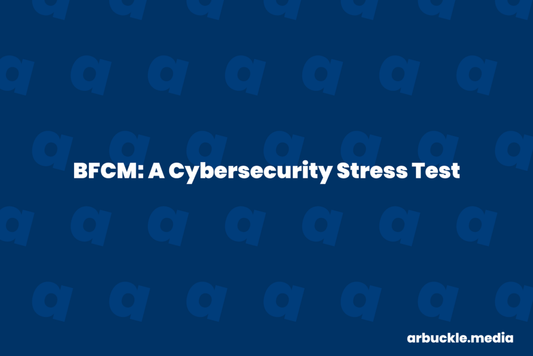Social Proof: Soliciting A Full Review/Testimonial
Arbuckle Media’s guide for how to generate and solicit a more effective review or testimonial for your brand.

Components of an Effective Review or Testimonial
- Outlines a problem:
- Outline a real, relatable issue someone had before they
- Eg. “I have very sensitive skin. All other products I used damaged…”
- Outline a real, relatable issue someone had before they
- Focuses on experience and emotion:
- Even practical and utility-driven purchases solve a pain point. What problem did they come in with, and how did your solution make them feel?
- Describes a special experience the product or service provides,
- Eg. “This product completely saved
- Addresses doubt head-on:
- Addresses a common concern or doubt a new customer might have about the product or service
- Eg. “I’ve tried products like this before and didn’t believe…”
- Addresses a common concern or doubt a new customer might have about the product or service
- Demonstrates the solution in action:
- How did your products/services solve the customer’s problem?
- Shows the best use of the product or service and the advantages a customer can expect;
- Demonstrates the competitive advantages or best aspects of the product or service;
- What makes your solution unique?
- Eg. “The customer service was fantastic…”
- Mentions target demographic:
- Shows which customers the product or service is ideal for in order for anyone considering the review to resonate with their perspective.
- Eg. “as someone who has struggled with x…” or “as the director of marketing…”
- Shows which customers the product or service is ideal for in order for anyone considering the review to resonate with their perspective.
- Shows the business can respond to or resolve a problem.
- Shows that even if you’re not perfect, you can still make it right.
- Eg. “Even when I had a problem with my first product, they replaced it for me
- Shows that even if you’re not perfect, you can still make it right.
Length
- For social media posts, landing pages, pop ups, and even emails, shorter testimonials tend to be more effective. General rule: 50 words or less.
- If you have longer testimonials, highlight the most essential keywords in bold to guide the reader’s attention.
Source Attribution
- The best testimonials will include the reviewer/author/writer’s:
-
Name
- Can be abbreviated for anonymity;
- Eg. “Jane S.” instead of “Jane Smith” is acceptable if required;
-
Title;
- not required in B2C, but required in B2B;
- Eg “VP Sales”
- Make sure the title makes sense, especially to other prospective customers who may be considering this testimonial.
-
Company/organization name,
- not required in B2C, but required in B2B;
- Eg. “ABC Supplies Inc.”
- Make sure the title makes sense, especially to other prospective customers who may be considering this testimonial.
-
Image;
- A real photograph of the customer; take it from their IG, Linkedin, Google review profile, etc.
- Do NOT use stock photographs. Ever.
- Use no photo if you do not have permission from the reviewer.
-
Relationship;
- specify if they are a past or current customer, and the type of service or specific product they used; it provides greater context when you can be more specific in your relationship to the reviewer.
-
Name
Note: Bold are required for all, whereas italicized fields are optional or depend on the context of the business.
Editorial
- Do not make edits to the content of the review, except where absolutely necessary, such as spelling and grammar.
Soliciting a Testimonial/Review
Sending a request
- The best testimonial requests include the following:
- A short, straightforward subject line.
- A direct yet friendly tone of voice.
- An easy ‘out’ if they don’t want to do it.
- A ‘no work’ option that makes the favor you’re asking virtually effortless.
- Optional: A benefit or reward for providing the testimonial.
Bullet point prompts (to send to prospective reviewers)
- What was your problem before we worked together?
- What did we do for you?
- Why did you choose to work with us? Why did you choose this product?
- How did you feel about the outcome? How did our product make you feel?
- Did you have any issues with our product? How did we make it right for you?
Let us know if this guide was helpful for you!




